As most of you are aware, our Council met on Tuesday night. In a four-hour long meeting, they debated and addressed a number of questions regarding who sits at our table, and the boundaries of our “big tent.”
I suspect that this meeting, and the eight-months-long process that led to it, will continue to be discussed and studied in the months and years ahead. And I expect that this study will place our debate within a larger, national, Jewish conversation about whether there is or can be one communal table anymore in the twenty-first century. It is not lost on me that it was during and following World War II that most of our collective networks were established, to provide a voice to all parts of our community, and to speak as powerful entities, united by common purpose.
JCRCs. The Jewish Council for Public Affairs. The Conference of Presidents.
All of these bodies and others, we created in the shadow of the Holocaust, and in the dawn light of the State of Israel; The darkest and the brightest points in 2,000 years of a Jewish diasporic story, in rapid succession.
This ability to sit together across differences at one table in this country was informed by many dynamics; a sense of despair and hope; of powerlessness by American Jews to prevent the Shoah and a newfound sense of obligation as the largest, most influential Jewish community in the world, emerging from its rubble; of aspiration, as Jews and Americans, to defeat antisemitism here at home and to care for our refugees – both from Europe and then from the Middle East, as our Mizrachi cousins were driven out of country after country after 1948.
In recent years, we’ve had debates here in Boston about the presence of two different JCRC founding member organizations, and their continued place, at our table. In each case, vast gaps in analysis of what threatens American and Global Jewry’s future were a central aspect of the conversation, vast differences in perception over what is antisemitism, and which antisemitism matters most, were subtext, if not text.
The very notion that these two organizations and so many others at our table could come together, as they did in 1944 to combat antisemitism in the streets of Boston, seems implausible, if not impossible in 2021. In other words: If we didn’t already have the JCRCs and the Conference of Presidents, would we be able to create them today?
I, for one, am confident that there are still compelling reasons for us to work together across our differences, that there are shared interests to advocate for. Some of them are practical and local. For example:
Just last week Massachusetts released the latest round of non-profit security grants, 53 grants totaling $950,000, of which 31 grants, totaling $525,000 went to Jewish institutions.
This would not have happened without a network like JCRC leading the work and advancing our interests on Beacon Hill, building a bipartisan coalition, bringing together Jewish institutions across the Commonwealth, and building partnerships with other vulnerable and targeted communities, on a matter that we’ve prioritized.
On a broader level, I believe that a community that is but 2% of the American people, and a small fraction of the global population, needs to work at building a renewed sense of common purpose and cause, a reason for holding together in fractured times. I also recognize that the younger people coming of age in today’s Jewish world, some of whom are already leading and others of whom will hopefully lead our community in the decades ahead, will, if we are successful in offering continued vision and purpose for our institutional structures, be leading organizations that were established fully a century before their time.
I’ve long felt that Avraham Infeld (a giant of Jewish communal leadership including at Hillel and at Birthright Israel) said it well when he articulated the notion that our mission ought to be – as individuals, as Jewish organizations and as communities – “to advance the continued renaissance of the Jewish people as a force for good in the world.”
Creating an inspiring and shared vision for our community and our institutions, for a century after that renaissance began, is no easy task. It will require a lot of hard work, difficult conversations, and a willingness to engage with far more respect for each other and our differences than has been evident in recent years. I don’t pretend to have the answers for how we do that work, but I know it is worth doing, and I hope that you’d be willing to do that hard work with us.
Thank you and Shabbat Shalom,
Jeremy




